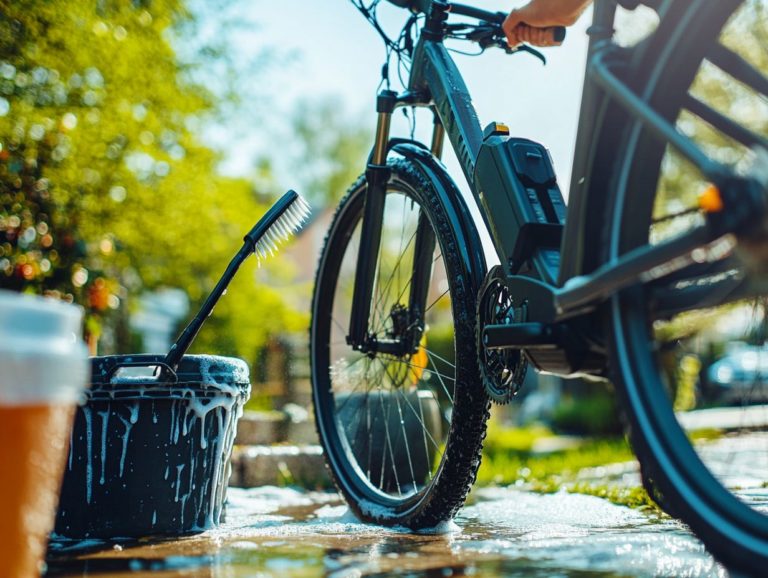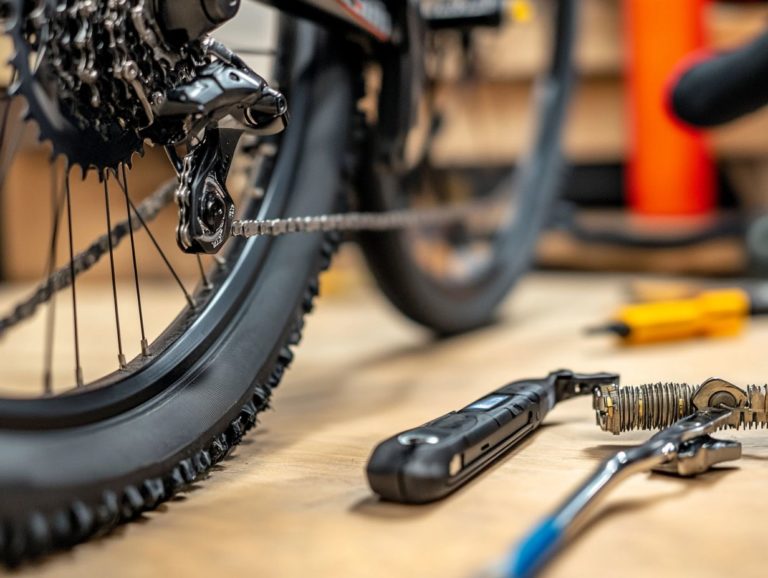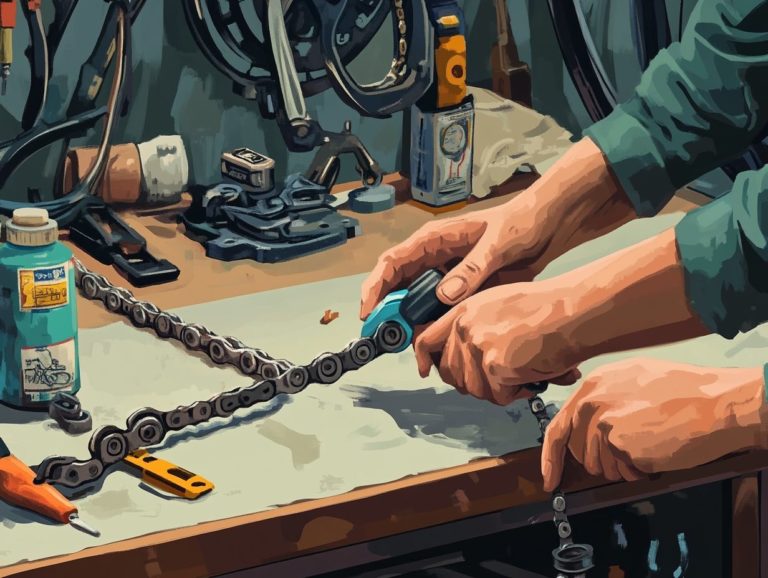How to Adjust Electric Bicycle Gears Effectively
Electric bicycles provide a convenient and enjoyable means of transportation. Grasping gear functionality is crucial for optimizing their performance.
This guide delves into the various types of gears found on electric bikes, highlighting their significance and the benefits of precise adjustment.
You’ll find a comprehensive, step-by-step approach to adjusting your electric bicycle gears. This includes essential tools and troubleshooting tips for common issues like gear skipping and slipping.
Get ready to boost your ride and tackle gear-related challenges with confidence!
Contents
- Key Takeaways:
- Understanding Electric Bicycle Gears
- Importance of Proper Gear Adjustment
- Step-by-Step Guide to Adjusting Electric Bicycle Gears
- Troubleshooting Common Gear Issues
- Frequently Asked Questions
- What are the steps to effectively adjust electric bicycle gears?
- Why is it important to adjust electric bicycle gears effectively?
- Can I adjust the gears on my electric bike without any prior experience?
- How often should I adjust the gears on my electric bike?
- What are some common issues that can arise from poorly adjusted gears on an electric bike?
- Can I adjust the gears on my electric bike if I don’t have the right tools?
Key Takeaways:
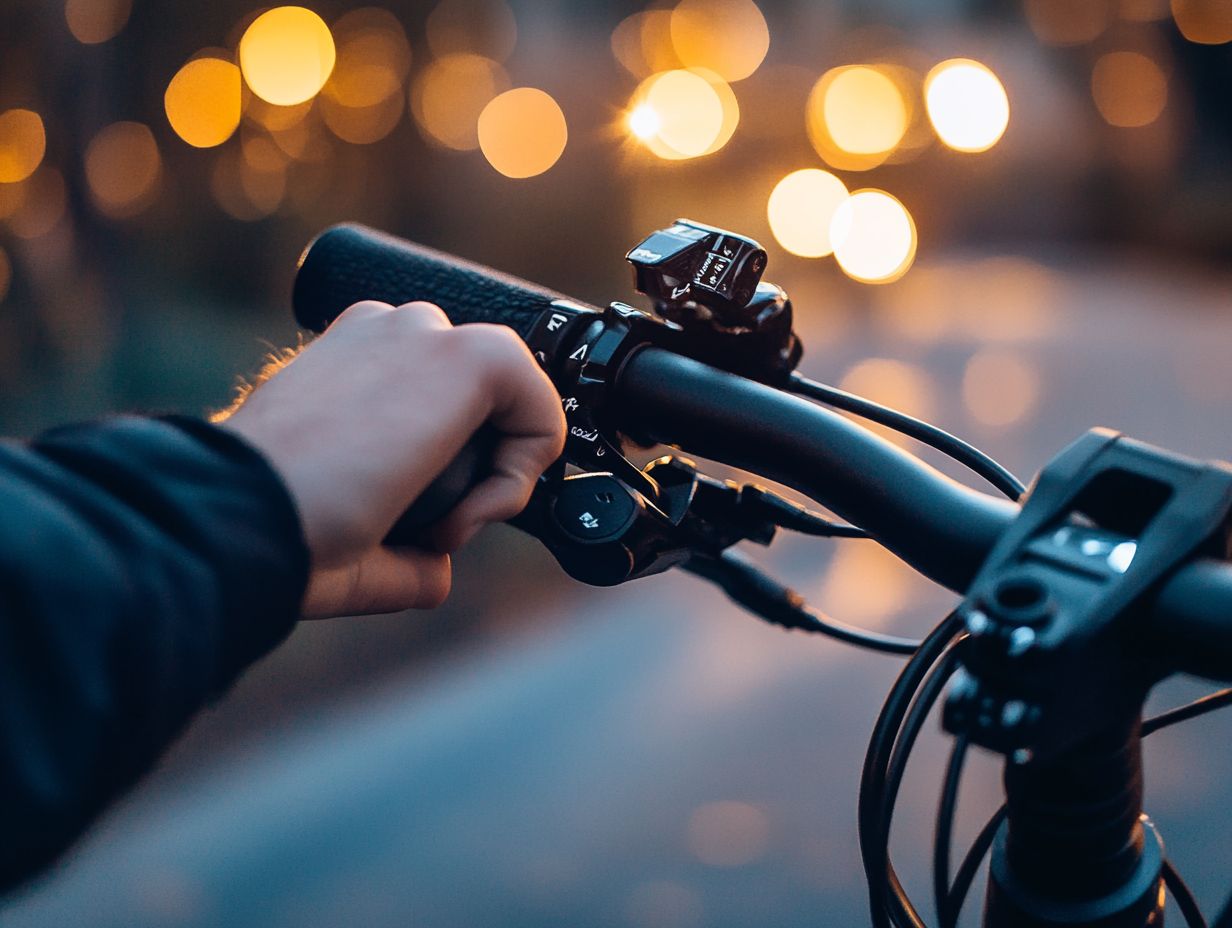
Adjust your gears properly for a smoother ride.
Understand different gear types and their functions for effective adjustments.
Regular maintenance and troubleshooting can fix common gear issues like skipping or slipping.
Understanding Electric Bicycle Gears
Understanding electric bicycle gears is crucial for optimizing your performance and ensuring a seamless riding experience. Whether you re cruising on flat terrain or conquering hilly landscapes, knowing your gears enhances your pedaling efficiency.
Systems like SRAM and Shimano are essential for shifting gears and adjusting your bike’s speed. They enable you to adapt to your pedaling effort and tackle a variety of cycling challenges.
This guide will explore the different types of gears available for eBikes. We will discuss their functions and the importance of proper maintenance to keep your ride smooth and enjoyable.
Types of Gears and Their Functions
Electric bicycles come equipped with various gear systems, including gear shifting systems, SRAM and Shimano components, and hub gears. Each is crafted to enhance performance based on your riding needs and terrain.
Grasping the nuances of these systems can profoundly elevate your riding experience. Gear shifting systems offer a wide range of gear ratios, enabling precise adjustments for steep inclines and diverse surfaces. Meticulous adjustments ensure seamless transitions that significantly impact your speed and efficiency.
In contrast, SRAM and Shimano components are known for their reliability and smooth shifting, especially under pressure. Meanwhile, hub gears, though typically heavier, provide simplicity and require minimal maintenance perfect for a hassle-free commute.
Choosing the right gear type is essential for maximizing performance and enhancing your enjoyment across various terrains.
Importance of Proper Gear Adjustment
Proper gear adjustment is vital for achieving optimal shifting performance. It maximizes your pedaling efficiency and enhances your overall riding experience, especially on varied terrains or steep hills.
A well-aligned derailleur reduces noise and provides essential support during rides. This allows you to maintain momentum and tackle uneven surfaces with confidence.
By committing to regular maintenance, including adjustments and cleaning, you ensure your bike’s components function effectively. This ultimately prolongs the life of your electric bike.
Start adjusting your bike gears today and enjoy a smoother ride tomorrow!
Benefits of Proper Gear Adjustment
The advantages of proper gear adjustment go beyond simple functionality. They elevate your performance, minimize noise, and significantly enhance your riding experience, no matter the terrain.
When your gear settings are finely tuned, you ll experience reduced wear and tear on your bike’s components. This not only extends your bike’s lifespan but also ensures smoother performance throughout your rides.
Optimized gear adjustments enable better power transfer while you pedal, allowing you to conquer steep hills and navigate rough surfaces with impressive efficiency.
Enhanced rider safety is another critical benefit. With properly adjusted gears, you can avoid unexpected slips or gear malfunctions that could compromise your stability on the road.
To keep reaping these rewards, regular checks on gear alignment and cable tension are essential. This ensures your bike remains in peak condition.
Clean and lubricate the drivetrain regularly to enhance your overall performance.
Step-by-Step Guide to Adjusting Electric Bicycle Gears
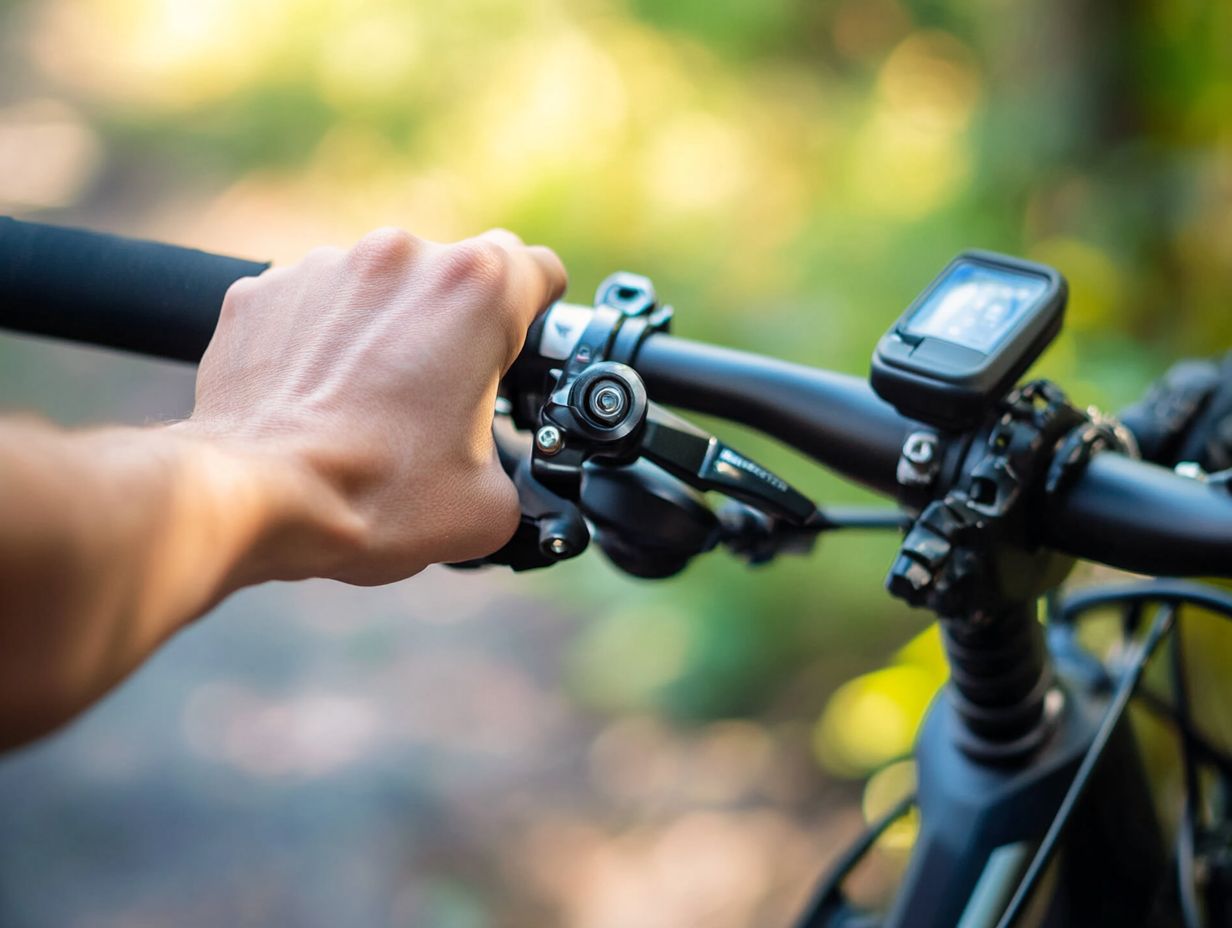
Adjusting the gears on your electric bicycle requires a systematic approach. This ensures every component like the gear-changing mechanism, cables, and gear system is perfectly aligned for optimal performance and comfort.
Get ready to transform your biking experience with this simple step-by-step guide! You’ll learn the essential tools and techniques needed for effective gear adjustments, leading to a smoother ride and enhanced shifting capabilities.
By mastering these processes, you can elevate your biking experience, whether you’re tackling rugged mountain trails or cruising along flat urban streets.
Tools and Materials Needed
To successfully adjust the gears on your electric bicycle, you ll need a specific set of tools and materials. This ensures the installation process is seamless and effective for optimal performance.
Having the right tools at your fingertips streamlines the adjustment process and enhances the longevity of your components. Essential tools include:
- Wrenches for tightening bolts
- Screwdrivers for fine-tuning gear positions
- Cable clamps to secure the cables in place
Lubricant is crucial for minimizing friction and ensuring smooth gear shifts. You might also need replacement cables if the originals show signs of wear or damage.
With these items ready, you can tackle gear adjustments confidently, knowing you re well-equipped for peak performance and reliability.
Step 1: Identify the Gears
The first step in adjusting your electric bike’s gears is accurately identifying the key components. These include the gear-changing mechanism, gear cables, and other crucial parts that contribute to the shifting functionality.
It’s essential to understand the specific roles of each component. For example, the gear-changing mechanism moves the chain between different gears; any misalignment can result in frustrating shifting performance.
Inspect the gear cables for any frays or kinks. Wear in these areas can impede smooth operation. Also, check the chain for signs of stretch or rust these are telltale indicators that it might be time for a replacement.
Regularly examining these parts not only extends your bike’s lifespan but also enhances your safety while riding. By being proactive in your inspections, you ll develop a keen eye for potential issues before they escalate into more significant problems.
Now gather your tools and get ready to enjoy a smoother ride!
Step 2: Adjust the Rear Derailleur
Adjusting the rear derailleur is essential for optimizing shifting performance. It ensures your gears engage smoothly while cycling, enhancing your overall riding experience.
A well-tuned derailleur boosts your speed. It also extends the lifespan of your bike s components.
To begin, locate the limit screws usually marked H for high gear and L for low gear. Make necessary adjustments to prevent the chain from shifting too far, whether onto the spokes or off the largest cog.
Make sure the derailleur hanger is straight for the best performance. The cable tension should also be correct; improper tension can lead to sluggish or missed shifts.
If you notice the chain skipping or hesitating, check for misalignment or wear on the derailleur. This might require a more thorough inspection or even replacement.
Step 3: Adjust the Front Derailleur
The next step involves adjusting the front derailleur for seamless shifting and optimal alignment with the chain. This alignment is essential for maintaining performance across varying terrains.
Getting the setup just right can dramatically boost your bike’s efficiency. This is especially true when tackling steep inclines or flying down rapid descents.
Proper derailleur positioning facilitates smooth gear transitions. It also helps prevent chain rub, that pesky annoyance that can compromise your ride quality.
To start, check the derailleur’s height above the largest chainring to ensure it s parallel to the chain. Riders often face challenges like misalignment or insufficient cable tension, leading to lackluster shifting.
By addressing these issues with careful adjustments, you ll contribute to an outstanding ride experience.
Step 4: Test and Fine-Tune
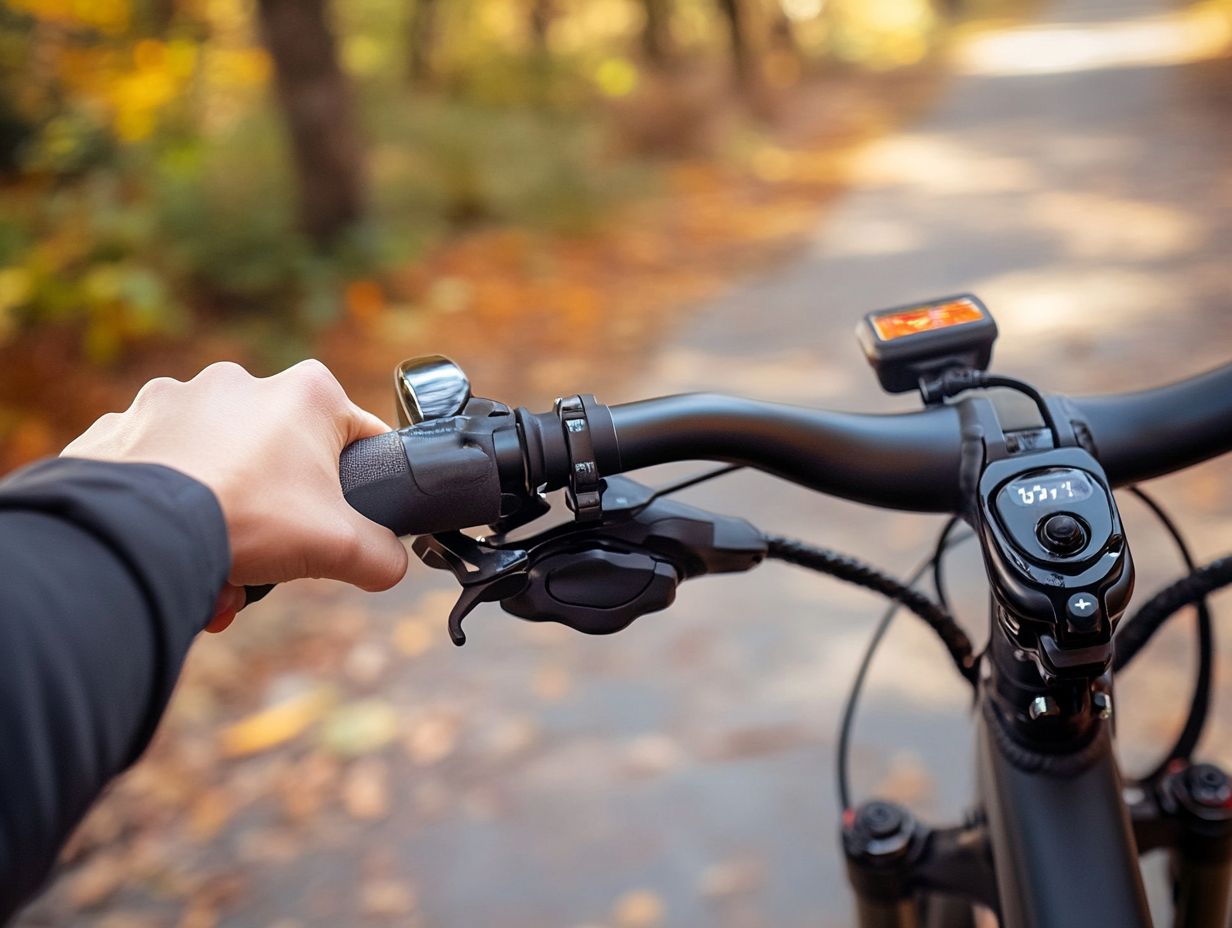
After making the necessary adjustments to both the rear and front derailleurs, don t skip testing the gears. Fine-tune them for optimal performance and seamless shifting.
Start by taking your bike for a short ride, systematically shifting through all the gears. This helps you see how well the derailleur engages the chain on each cog.
Pay close attention to any unusual sounds or hesitations; these can pinpoint areas needing more attention. If the shifting isn’t as crisp as you’d like, you may need to tweak the limit screws or cable tension.
Conduct periodic inspections to maintain peak performance. Over time, dirt and debris can accumulate, affecting shifting quality. Common issues like skipping or ghost shifting often signal that further adjustments or even new cables might be required, ensuring a smooth and efficient ride every time.
Troubleshooting Common Gear Issues
Troubleshooting common gear issues is an essential skill for you as a cyclist, particularly if you ride an electric bike. This expertise enables you to swiftly diagnose and resolve problems like gear skipping and slipping, ultimately ensuring a smoother and safer ride.
How to Fix Gear Skipping
Fixing gear skipping demands a systematic approach to uncover the underlying causes. These might include derailleur misalignment or worn components that disrupt smooth shifting performance.
To tackle these issues effectively, begin by visually inspecting the derailleur alignment. Ensure it s positioned correctly in relation to the cassette and chainrings.
Next, take a close look at the condition of the chain and cassette. Excessive wear can hinder proper engagement, resulting in that frustrating slipping you want to avoid, especially when climbing or during intense pedaling efforts on hills.
Adjusting the high and low limit screws on the derailleur can refine your shifting precision on your bike.
After making these adjustments, take a test ride to assess performance improvements. Listen for any unusual sounds and watch for consistent shifting.
Monitoring these enhancements will confirm that your repair is effective and enhances overall performance.
How to Fix Gear Slipping
Gear slipping can be frustrating. Start by checking the cable tension to ensure everything is aligned properly.
Inspect the cable tension carefully. Too much slack makes your bike unresponsive, while too much tension can stress the system.
Next, check the derailleur and chainrings. They should be aligned; misalignment can cause slipping.
For better shifting accuracy, make sure the derailleur is parallel to the cogs.
Regular maintenance is essential. Clean and lubricate your drivetrain and check for wear often to prevent issues.
Frequently Asked Questions
What are the steps to effectively adjust electric bicycle gears?

To adjust electric bicycle gears effectively, follow these steps:
- Start by identifying the type of gear system on your bike.
- Loosen the cable tension by turning the barrel adjuster on the gear shifter.
- Shift to the highest gear and tighten the tension until it is taut.
- Shift to the lowest gear and adjust the low limit screw until the chain aligns with the gear.
- Test the gears by shifting up and down to ensure smooth changing.
- Fine-tune the gears using the barrel adjuster until they shift seamlessly.
Why is it important to adjust electric bicycle gears effectively?
Did you know? Adjusting electric bicycle gears is crucial for a smooth and efficient ride! It enhances speed and performance. Poorly adjusted gears can result in a jerky ride and may damage the chain and gears, making uphill rides challenging.
Can I adjust the gears on my electric bike without any prior experience?
Yes, you can adjust the gears on your bike even if you have no prior experience. However, it’s wise to seek professional help if you’re unsure or uncomfortable with the adjustment process.
How often should I adjust the gears on my electric bike?
The frequency of adjusting gears on your bike depends on usage and condition. It’s recommended to check and adjust the gears every few months or after long, intense rides.
What are some common issues that can arise from poorly adjusted gears on an electric bike?
Poorly adjusted gears can cause issues like difficulty shifting gears, slipping gears, noisy operations, and damage to the chain and gears. This impacts your overall cycling experience and can reduce efficiency.
Can I adjust the gears on my electric bike if I don’t have the right tools?
It is highly recommended to have the proper tools for adjusting the gears on an electric bike, including a cable clamp and a suitable torque wrench for precise adjustments. If you lack the right tools, it s best to take your bike to a professional shop to avoid causing any damage.

